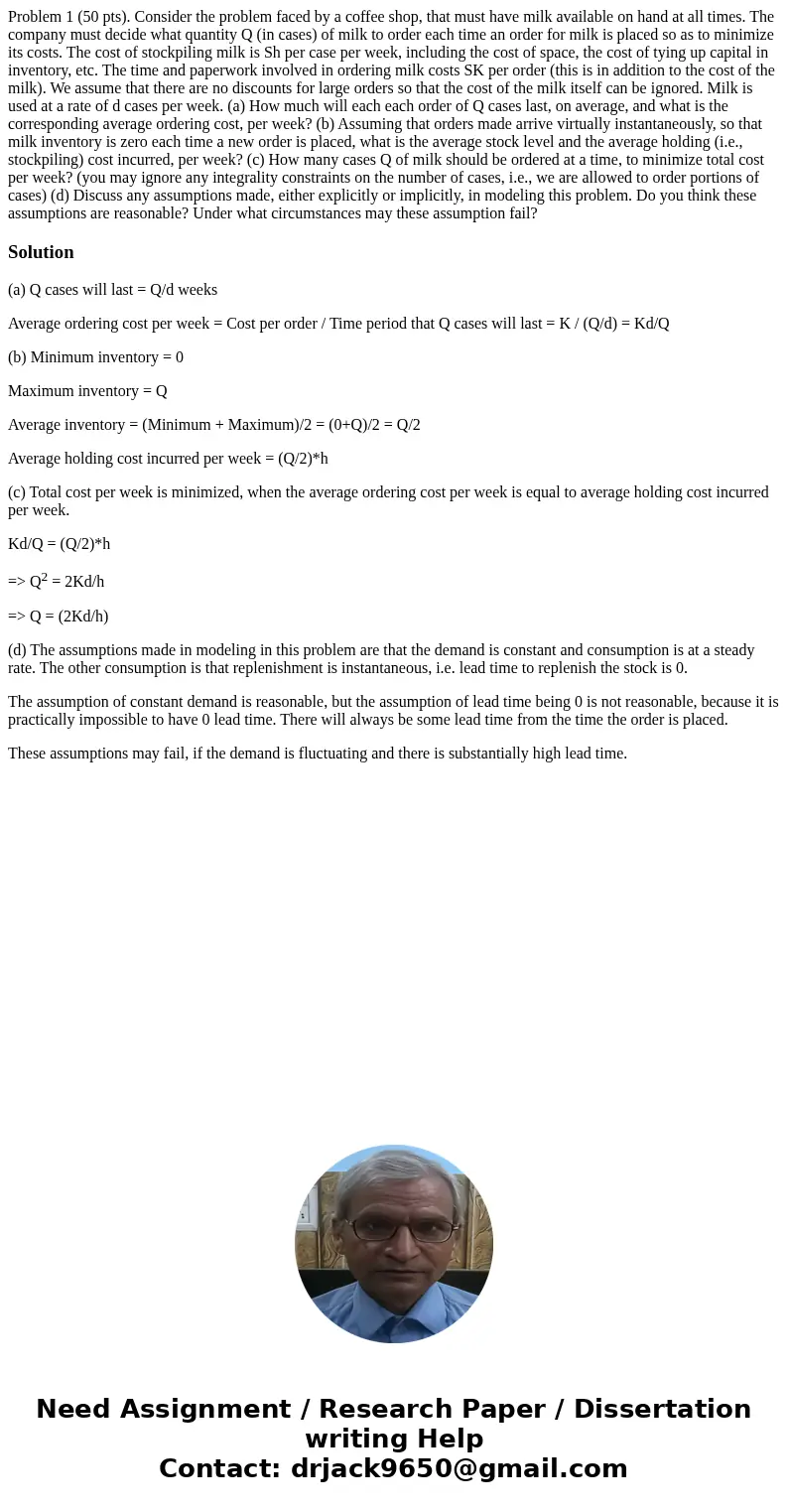Problem 1 (50 pts). Consider the problem faced by a coffee shop, that must have milk available on hand at all times. The company must decide what quantity Q (in cases) of milk to order each time an order for milk is placed so as to minimize its costs. The cost of stockpiling milk is Sh per case per week, including the cost of space, the cost of tying up capital in inventory, etc. The time and paperwork involved in ordering milk costs SK per order (this is in addition to the cost of the milk). We assume that there are no discounts for large orders so that the cost of the milk itself can be ignored. Milk is used at a rate of d cases per week. (a) How much will each each order of Q cases last, on average, and what is the corresponding average ordering cost, per week? (b) Assuming that orders made arrive virtually instantaneously, so that milk inventory is zero each time a new order is placed, what is the average stock level and the average holding (i.e., stockpiling) cost incurred, per week? (c) How many cases Q of milk should be ordered at a time, to minimize total cost per week? (you may ignore any integrality constraints on the number of cases, i.e., we are allowed to order portions of cases) (d) Discuss any assumptions made, either explicitly or implicitly, in modeling this problem. Do you think these assumptions are reasonable? Under what circumstances may these assumption fail?
(a) Q cases will last = Q/d weeks
Average ordering cost per week = Cost per order / Time period that Q cases will last = K / (Q/d) = Kd/Q
(b) Minimum inventory = 0
Maximum inventory = Q
Average inventory = (Minimum + Maximum)/2 = (0+Q)/2 = Q/2
Average holding cost incurred per week = (Q/2)*h
(c) Total cost per week is minimized, when the average ordering cost per week is equal to average holding cost incurred per week.
Kd/Q = (Q/2)*h
=> Q2 = 2Kd/h
=> Q = (2Kd/h)
(d) The assumptions made in modeling in this problem are that the demand is constant and consumption is at a steady rate. The other consumption is that replenishment is instantaneous, i.e. lead time to replenish the stock is 0.
The assumption of constant demand is reasonable, but the assumption of lead time being 0 is not reasonable, because it is practically impossible to have 0 lead time. There will always be some lead time from the time the order is placed.
These assumptions may fail, if the demand is fluctuating and there is substantially high lead time.

 Homework Sourse
Homework Sourse